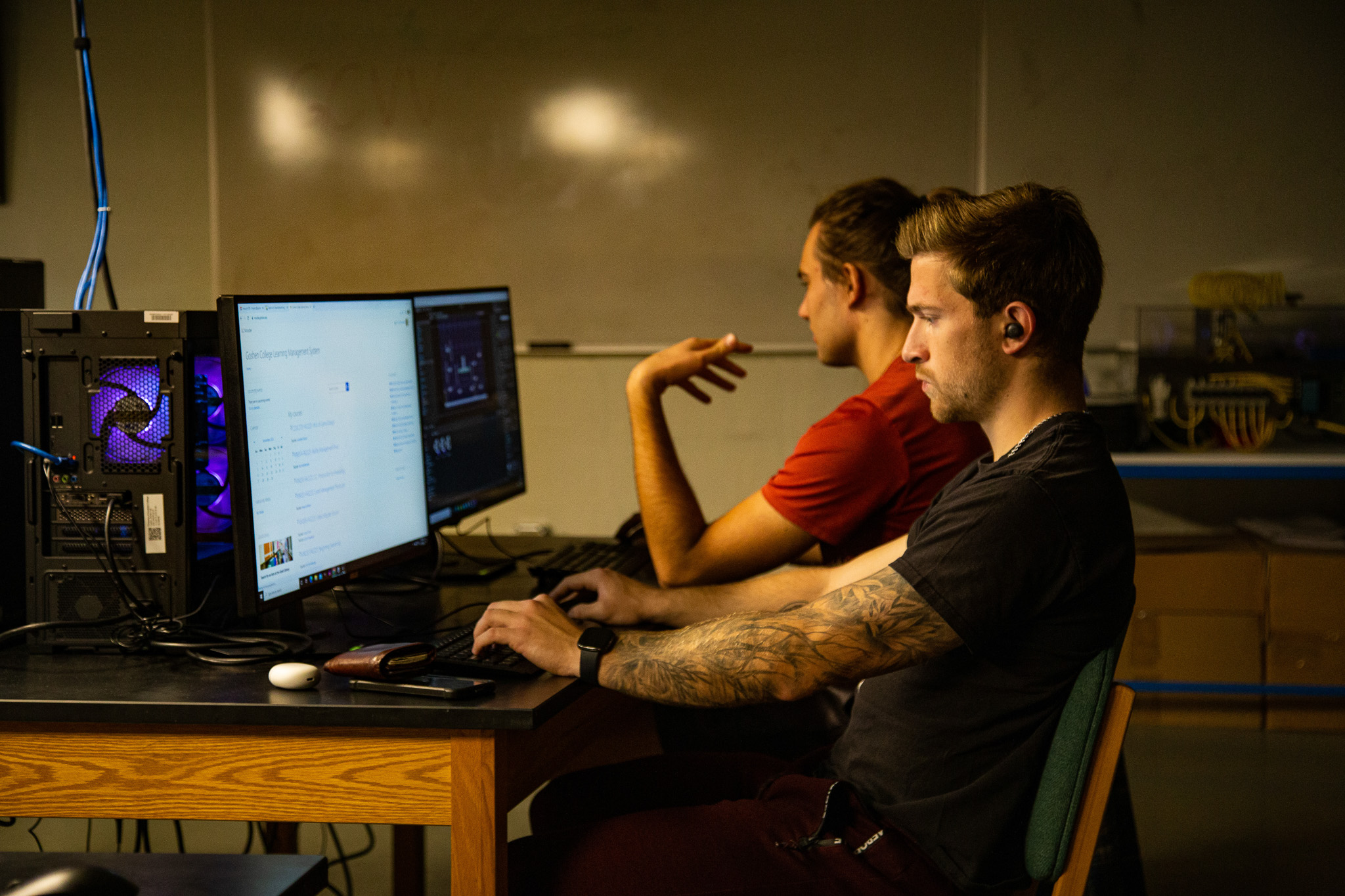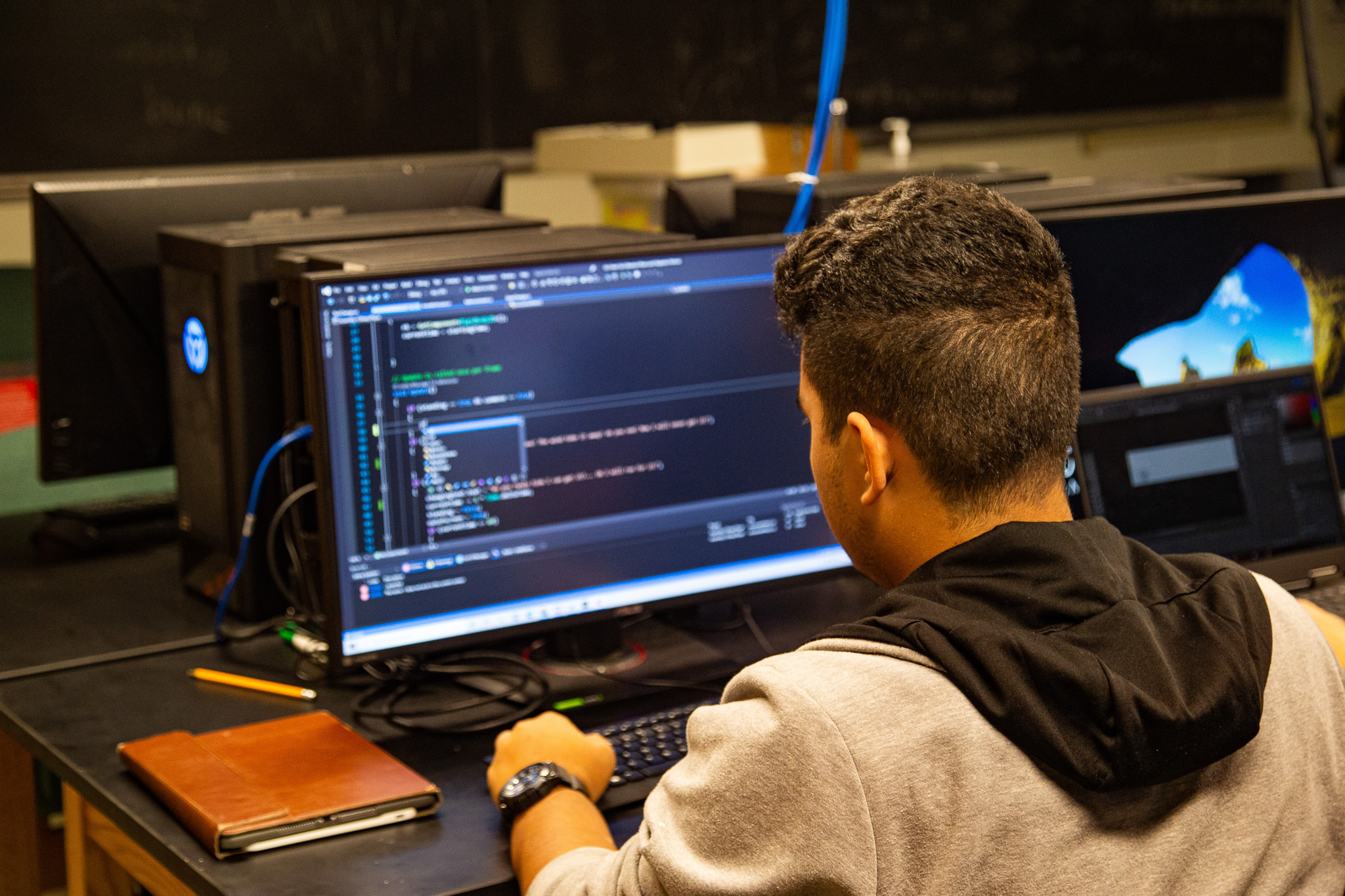Goshen College is pleased to announce the 22nd annual musical celebration of Christmas, A Festival of Carols.

News
Goshen College awarded half-million-dollar NSF grant for STEM internet upgrades
Aug 07 2025
The National Science Foundation (NSF) recently granted Goshen College more than $550,000 for upgrades to its campus internet network, with the goal of benefiting STEM (Science, Technology, Engineering and Mathematics) education and research.
“This grant will allow us to upgrade the network backbone and our internet connection in a manner that creates a redundant, high-speed network core that can serve STEM processes, STEM research, computer labs and more,” said Paul Housholder, director of the college’s information technology infrastructure and a co-author of the grant.
Currently, Goshen College’s internet connectivity is limited to two gigabits per second (Gbps). It also cannot prioritize academic traffic and, crucially, lacks redundancy. If the school’s internet connection were to fail at its source, the entire campus would lose connection.
However, the two-year project that began in April, titled “The Need for Speed – Resourcing STEM Education and Research with Network Improvements,” will quadruple the school’s bandwidth to eight Gbps across campus. It will also create redundant fiber paths across and into the campus, safeguarding the school’s internet connection.
At the core of the project, though, are its benefits to STEM education. “We can allow the rest of the campus to utilize the increased internet capacity because of this upgrade, primarily supporting STEM research and education,” Housholder said.
Computer science, biology, chemistry, physics, mathematics, sustainability and numerous other departments are all departments set to benefit directly from the upgrade.

Paul Housholder
Campus Benefits
Although the campus will have eight Gbps of connectivity across the board, the upgrades will enable STEM research to be prioritized with a high-speed 10 Gbps connection to a statewide research network. Additionally, ITS will provide 144 terabytes of storage for research and analysis across STEM departments — more storage than the entire school’s current combined Google Drive usage.
Across academic departments, professors and students rely on tools like ArcGIS, FlyBase, R Studio, Python and Google Cloud. Having over 10 Gbps of bandwidth and a centralized storage system will allow for a more effective, efficient workflow.

Paul Meyer Reimer
Paul Meyer Reimer, professor of physics, contributed to the project as a co-principal investigator. He said that the grant will allow both students and faculty to dive deeper into research and that “data science as a whole is going to benefit” from the upgrades.
The project will also create internships for student technical specialists, providing them with highly technical experience in a real-world setting. The student workers will assist with both implementation and system maintenance and support.
The grant, part of the NSF’s Campus Cyberinfrastructure program, has not been given to a school as small as Goshen College in Indiana over a decade. Currently, the only other two schools in the state funded by the program are Indiana University and Purdue University.

David King
Writing the grant was a long process, spearheaded by co-authors Householder and David King, the college’s senior enterprise systems architect. They referenced numerous ongoing studies at the college that would benefit from these upgrades. These included:
- A study on the effects of burning and grazing in soil, where professors Jonathan Schramm and John Mischler are working with Ryan Sensenig, a professor at Notre Dame;
- A study mapping the risk of mycotoxin exposure for Tanzanian infants, led by Mischler and Meyer Reimer;
- A project developing an open-source engine for simulating molecular dynamics, led by professor Manu Bhattari;
- Genomics research, where professor Raquel Montanez Gonzalez is collaborating with the Genomics Education Partnership;
- And numerous others.



